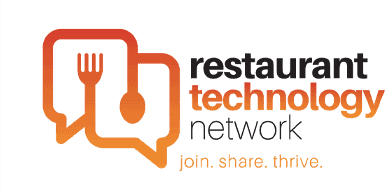In the past couple of months, many states have made concerted efforts to reopen their economies, with varying levels of success. This has been good news for restaurants, as many have been able to resume dining room service, albeit at reduced capacities.
What follows is a rundown of the latest available data regarding the economic status of the restaurant industry as COVID regulations continue to expand and contract across the country.
Sales
According to a report by Black Box Intelligence, overall year-over-year restaurant comp sales growth improved for the week ending July 12.
The rate at which those sales are growing, however, seems to be slowing down significantly. Full-service restaurants specifically, for whom comp sales had been steadily increasing for 12 weeks in a row, have seen those sales stagnate over the past three weeks. Limited-service restaurants, on the other hand, have seen positive sales growth over the last two weeks. Comp traffic for the industry as a whole for the week in question remained flat.
Dining rooms
Though dining rooms in locations across the country have been reopening, recent rises in COVID infection rates are causing renewed capacity restrictions on the regional level. As a result, the percentage of dine-in sales—which had been increasing, as more customers were choosing to dine in—decreased to 61% for the week, after hitting a high of 64% two weeks ago.
Resurgent diner caution brought on by renewed health concerns seems to have caused full-service restaurants to hit a ceiling in regards to the percentage of establishments open for dine-in service.
This percentage had been enjoying a steady rise following the end of April, but has since reached a plateau of around 87% for three consecutive weeks. The percentage of limited-service restaurants open for dine-in, on the other hand, has continued to rise through the week ending July 12, though it remains at a level below full-service numbers with a percentage of 71%.
Off-premise sales
Many limited-service restaurants, despite some lessening of dine-in restrictions, have opted to maintain off-premise service instead. As a result, off-premise sales, including drive-thru, delivery, and to-go, have seen an increased rate of growth since mid-April. Full-service restaurants have also seen an increase in off-premise sales over the past three weeks after having fallen in the weeks previous.
Geographic trends
Geographically, the best comp sales performance for the week ending July 12 were seen in Louisiana, Mississippi, Alabama, Utah, Georgia, Idaho, South Dakota, Tennessee, Arkansas and Indiana. Locations with the worst weekly comp sales included the District of Columbia, New Jersey, California, Vermont, Massachusetts, Maine, Washington, Connecticut, New Hampshire and Hawaii.
Guest behavior trends
In their July 17th report, Black Box Intelligence declared cleanliness to be “the new ambiance,” as net customer sentiment toward cleanliness rose nearly 20 points in the period between April and June. This trend continues upward in their most recent report. Guests’ focus on sanitation and safety, as they begin to return to a dine-in experience, has become much more pronounced in recent weeks. And the response of those guests to the due diligence and heightened cleanliness protocols of restaurant operators has been increasingly positive.
As a result of the above numbers, safety is understandably a top concern for restaurant operators.
Out of 300 operators polled by Black Box, 96% are requiring masks for all restaurant staff, 86% are removing some tables from their restaurants, 77% take the temperature of their employees before a shift, 71% are requiring gloves for all restaurant staff, and 57% have implemented plexiglass barriers (most common in limited service brands)
The outlook
According to Black Box, the restaurant environment will continue to be a challenging one over the next 90 days, as two of every three execs and owners expect things to get worse before they get better.
Fortunately, though, the latest news regarding vaccine development and therapeutic treatments have continued to trend positive. This, in cautious combination with increased mask and social distancing mandates, will hopefully hasten a decline in infection rates and allow us all to get back to business sooner rather than later.





